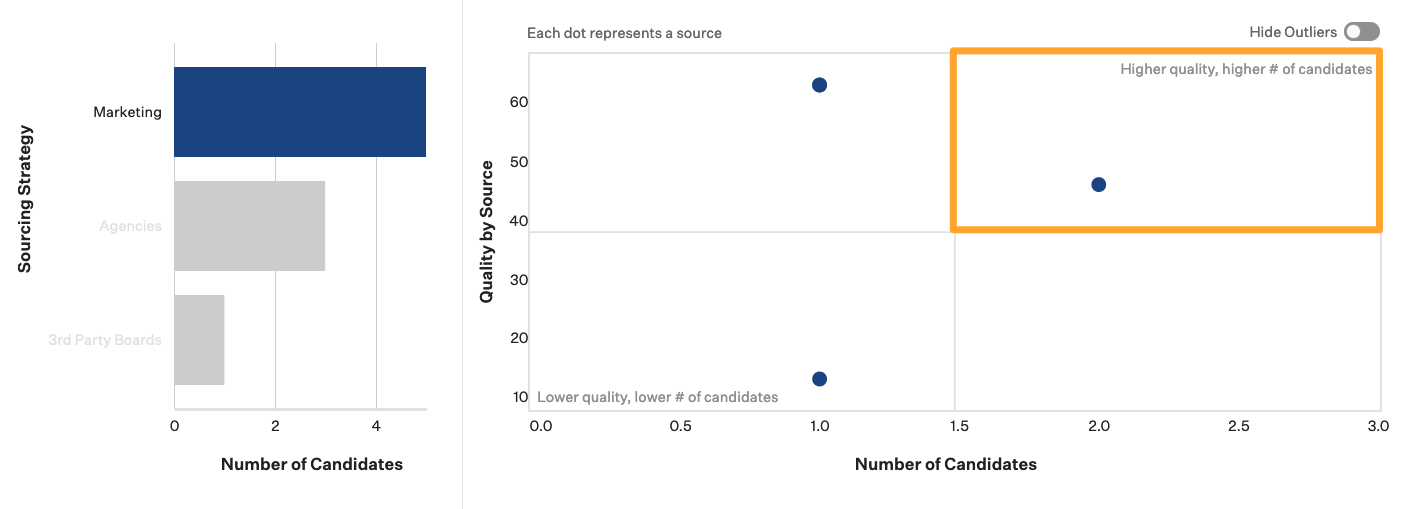The candidate quality by source report helps your organization understand where your best candidates are applying. Each source is assigned a quality percent value to easily compare agencies, referrals, job boards, and any other candidate source.
Tip: Need help troubleshooting this report? Check out Troubleshoot a report.
Candidate quality by source report
To create a candidate quality by source report, click Reports on your navigation bar.

Click Essential reports on the left.

Scroll to the Learn from Past Recruiting Efforts section and click Candidate Quality by Source.

The candidate quality by source report will generate.
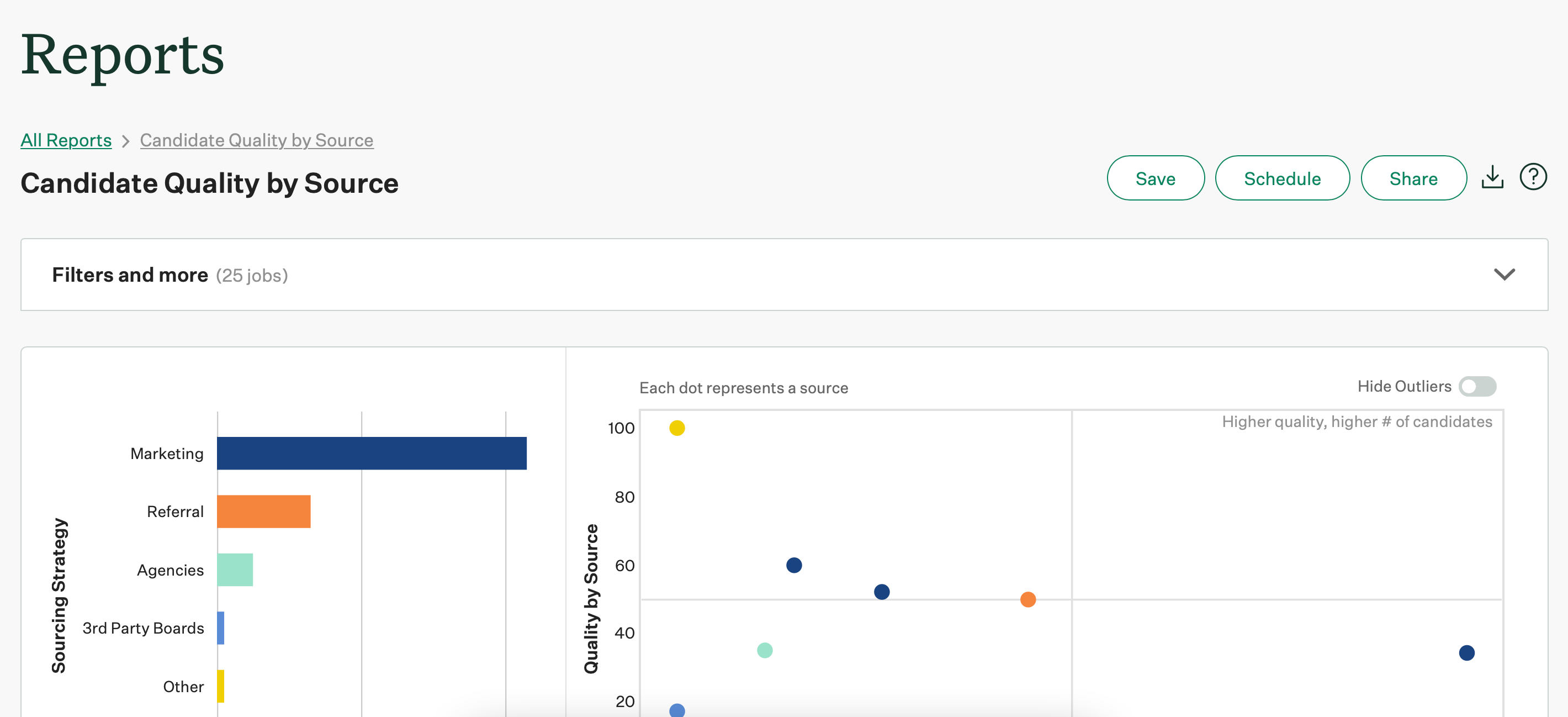
The candidate quality by source will display information for the following:
- Source
- Sourcing strategy
- Number of candidates in each job stage per source
- Total hires per source
- Quality percentage
Quality percent is a calculation of the average distance traveled in a job pipeline for all candidates for a particular source. For example, if every candidate made it all the way through a job pipeline (from application to offer), the quality percent would be 100%. However, if every candidate was rejected in the job's first stage, the quality percent for the source would be 0%. If on average, candidates made it halfway through the pipeline, the source's quality percent would be 50%.
Candidate quality by source report filters
Click Filters and more to apply filters to further refine your report.
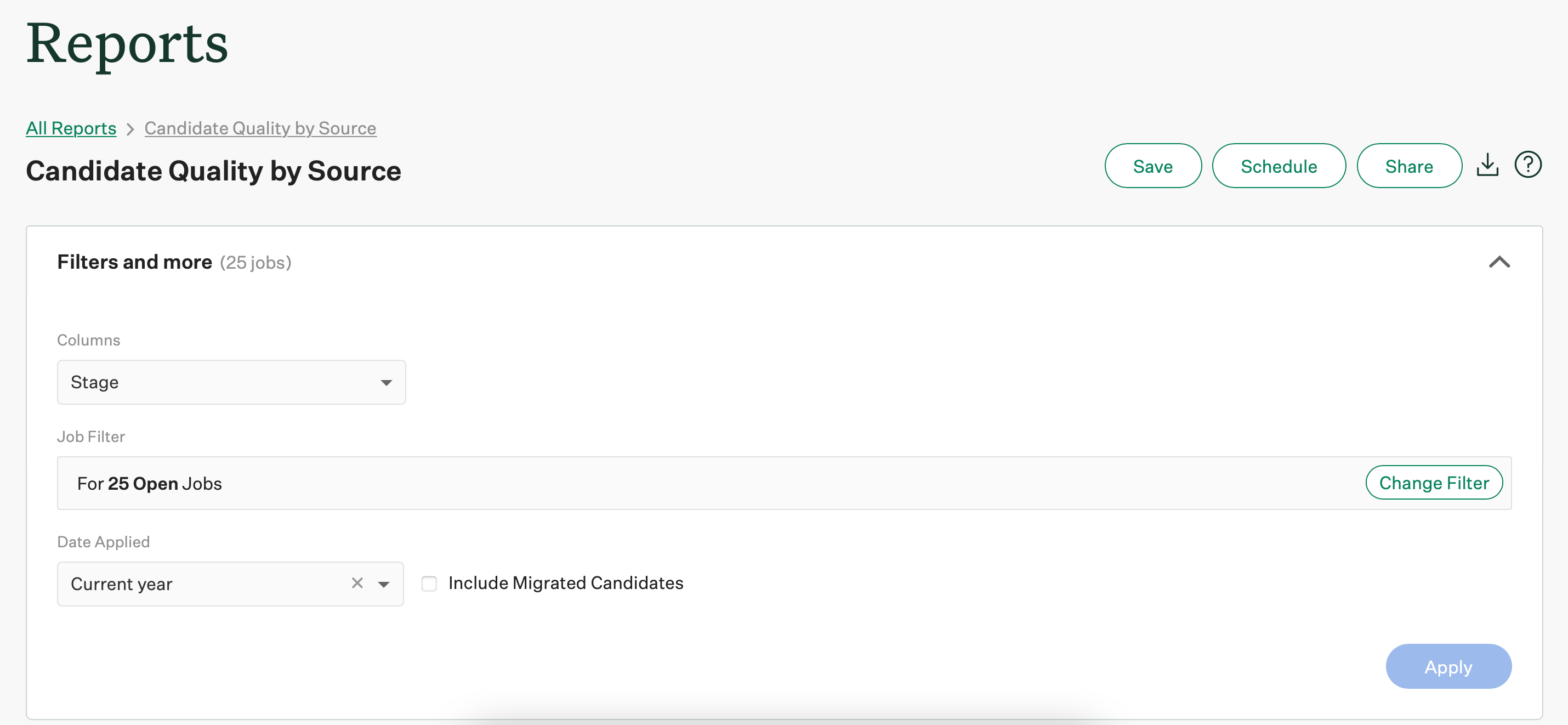
The candidate quality by source report can be filtered by the following:
- Job
- Job status
- Department
- Office
- User
- Hiring team role
- Custom job field
- Date applied
- Include migrated candidates
You can also organize columns by stage or milestone.
Note: The date applied filter is set to the current year by default.
Click Apply to regenerate the report after applying any filters.
Candidate quality by source visualization
The candidate quality by source report will also visualize the quality by source.
The candidate quality by source report displays results in two graphs. The bar graph on the left summarizes the sourcing strategy by the highest quality percent. The scatterplot on the right displays the distribution of candidates based on the specific source.
You can learn more about each point on the graph by hovering your cursor over a specific bar or point.
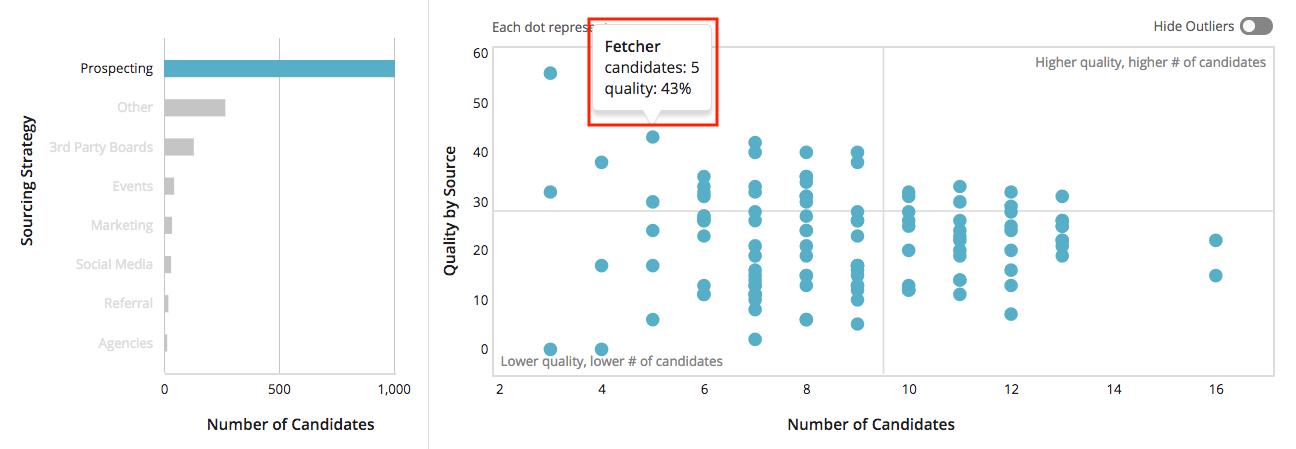
When you select a bar on the left, the scatterplot will only display candidates from the selected sourcing strategy.

Note: Sourcing strategies are default hierarchies and cannot be modified. However, your organization can add custom sources. Check out this article for more information: Add a custom source.
If certain sources are skewing your data and obstructing a clear view of your data in the scatterplot, enable the Hide Outliers toggle to filter out high-end outliers.
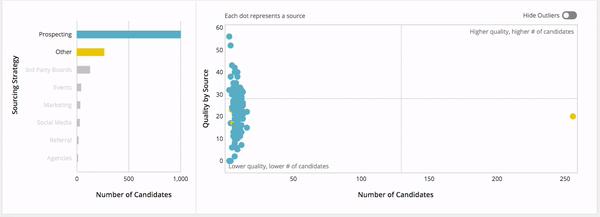
Reading the candidate quality by source scatterplot
The scatterplot is organized into quadrants that can you understand how certain sources are performing in relation to other sources included within and across sourcing strategies.
In the lower-left quadrant of the scatterplot are the sources that have historically submitted fewer candidates of lower quality.
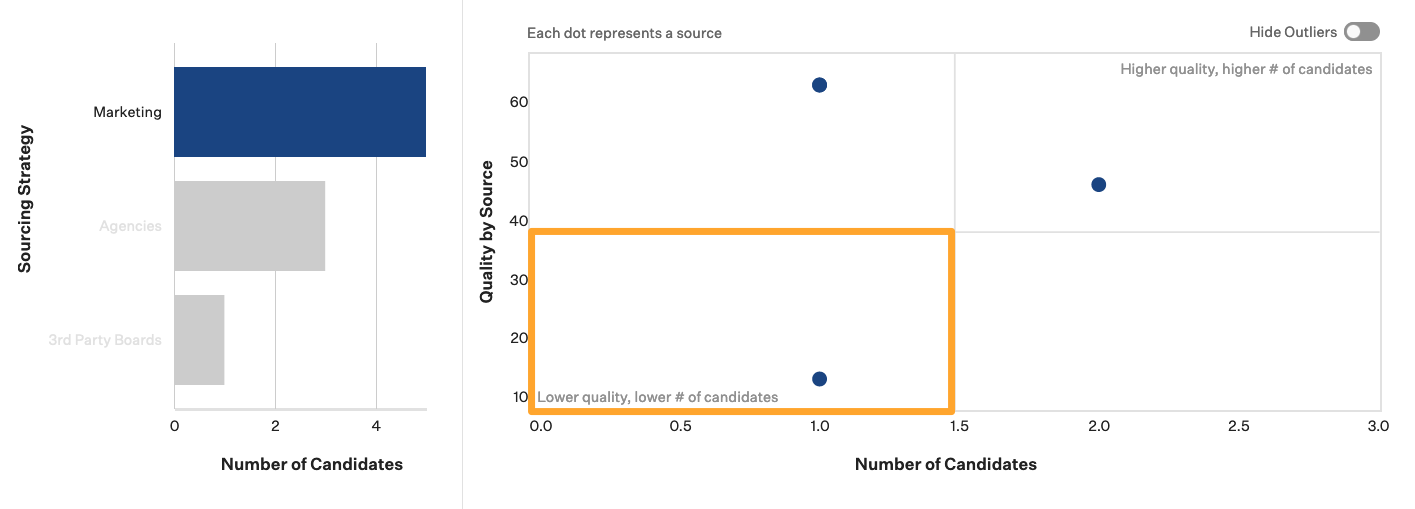
In the upper-left quadrant of the scatterplot are the sources that have historically submitted fewer high-quality candidates. We recommend that your organization continue to nurture and invest in these sources to increase the total number of candidates submitted by these sources.
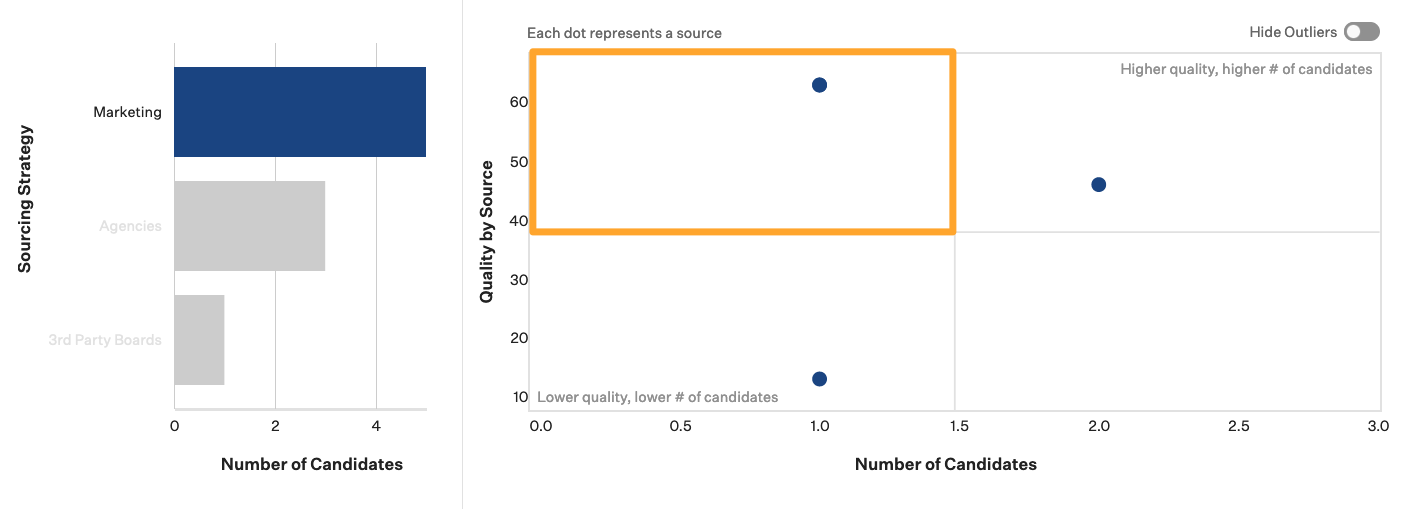
In the lower-right quadrant of the scatterplot are the sources who have historically submitted many low-quality candidates. We recommend that your organization consider avoiding or reducing your investment in these sources.
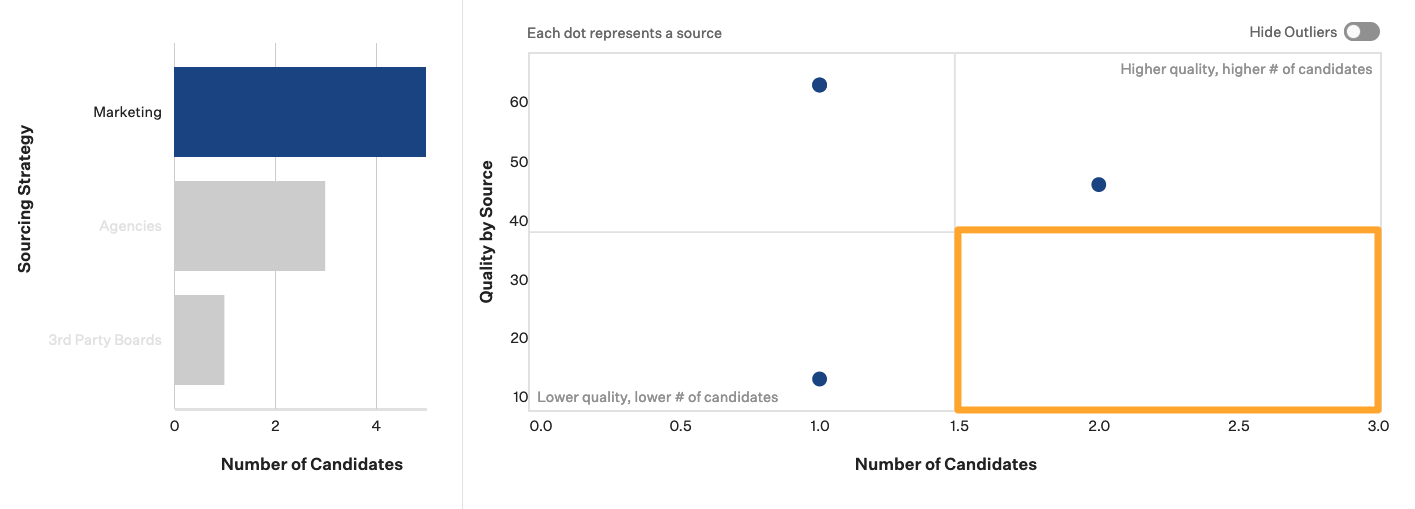
In the upper-right quadrant of the scatterplot are the sources who have historically submitted many high-quality candidates. Sources in this quadrant are relatively high-performing in comparison to the other sources included in the visualization.
